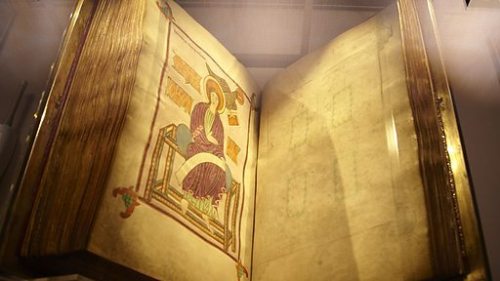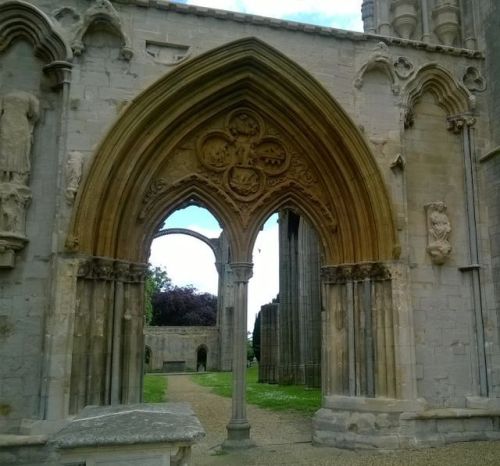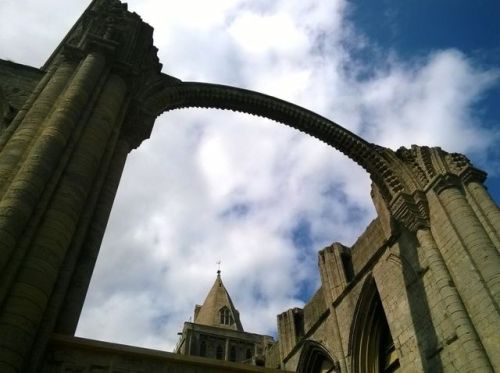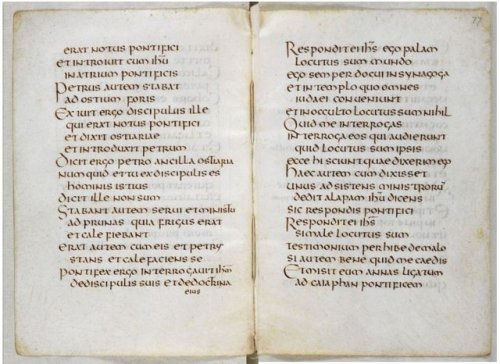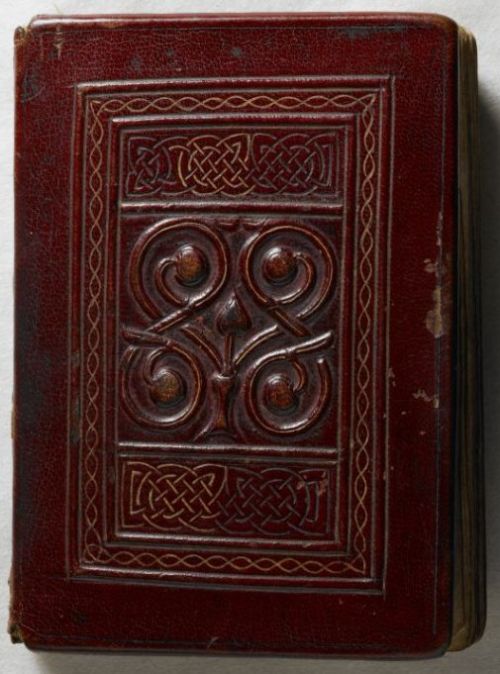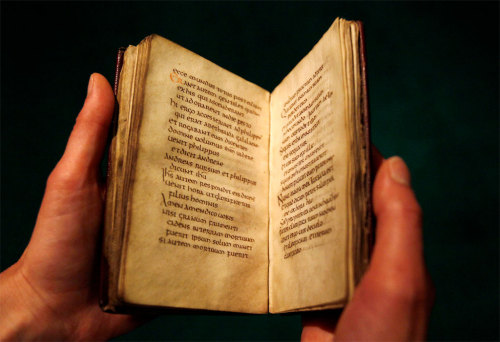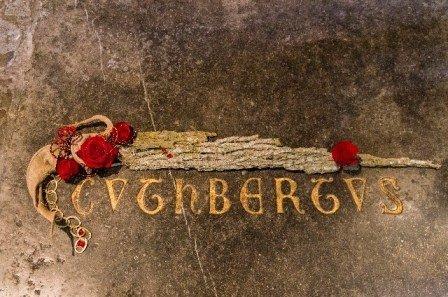#anglo-saxon
Ingīsern ᛁᛝᛁᛋᛖᚱᚾ [iŋgiːzerˠn] ‘Ing-iron’
Grǣġbeald ᚷᚱᚫᚷᛒᛠᛚᛞ [græːjbæɑɫd] ‘gray-bold’
Þyrsbeald ᚦᚣᚱᛋᛒᛠᛚᛞ [θyrˠzbæɑɫd] ‘giant-bold’
Hildgār ᚻᛁᛚᛞᚷᚪᚱ [hiɫdɣɑːr] ‘battle-spear’
Heoruhelm ᚻᛇᚱᚢᚻᛖᛚᛗ [heoruheɫm] ‘sword-protector’
Eormenhāl ᛇᚱᛗᛖᚾᚻᚪᛚ [eorˠmenhɑːl] ‘whole-healthy’
Sīþrīċ ᛋᛁᚦᚱᛁᚳ [siːðriːtʃ] ‘journey-ruler’
Rīċgāst ᚱᛁᚳᚷᚪᛋᛏ [riːtʃɣɑːst] ‘ruler-spirit’
Ġeardhrēþ ᚷᛠᚱᛞᚻᚱᛖᚦ [jæɑrˠdr̥eːθ] ‘enclosure-glory’
Ġeonggār ᚷᛇᛝᚷᚪᚱ [jeoŋggɑːr] ‘young-spear’
Ǣþelflǣd ᚫᚦᛖᛚᚠᛚᚫᛞ [æːðeɫvlæːd] ‘noble-beauty’
Wynnwīġ ᚹᚣᚾᚾᚹᛁᚷ [wynnwiːj] ‘joy-war’
Ealhīsern ᛠᛚᚻᛁᛋᛖᚱᚾ [æɑlhiːzerˠn] ‘temple-iron’
Fæstfūs ᚠᚫᛋᛏᚠᚢᛋ [fæstfuːs] ‘fast-eager’
Eorcnangang ᛇᚱᚳᚾᚪᚾᚷᚪᛝ [eorˠknɑŋgɑŋx] ‘precious-path’
Hālsiġe ᚻᚪᛚᛋᛁᚷᛖ [hɑːɫzije] ‘healthy-victory’
Hræfnbeorht ᚻᚱᚫᚠᚾᛒᛇᚱᚻᛏ [r̥ævnbeorht] ‘raven-bright’
Gālġield ᚷᚪᛚᚷᛁᛖᛚᛞ [gɑːljiyɫd] ‘lustful-payment’
Burgmund ᛒᚢᚱᚷᛗᚢᚾᛞ [burɣmund] ‘fortress-protection’
Gangġiefu ᚷᚪᛝᚷᛁᛖᚠᚢ [gɑŋgjiyvu] ‘path-gift’
Fūsbeorht ᚠᚢᛋᛒᛇᚱᚻᛏ [fuːzbeorht] ‘eager-bright’
Staffordshire Hoard Helmets Revealed for Public Display
https://www.staffordshirehoard.org.uk/staffordshire-hoard-helmets-revealed-for-public-display
Research reveals approximately a third of the fragments in the Staffordshire Hoard come from a very high-status helmet. Helmets of its kind are rare – the Staffordshire Hoard helmet is one of a very small number to be found from this period - 600-650
Post link
Earliest written reference to an Elf - ælf. Anglo Saxon, Royal Prayer Book. Royal MS 2 A XX, folio 45v. Likely made in Mercia, early 9th Century.
http://www.bl.uk/manuscripts/FullDisplay.aspx?ref=Royal_MS_2_A_XX
Post link
The 4th of June, is the feast day of Eadfrith, Bishop of Lindisfarne - Saint Eadfrith. Bishop of Lindisfarne from 698 until his death in 721. He is solely responsible for creating the stunning Lindisfarne Gospels. - The first Image is the carpet page introducing the Gospel of Matthew, and the Chi-Rho page, as well as pictures of the book on display in Durham in 2013.
You may be able to listen to this BBC Radio 4 essay about Bishop Eadfrith.
http://www.bbc.co.uk/iplayer/episode/b01ngr4r/The_Essay_AngloSaxon_Portraits_Eadfrith_the_Scribe/
Post link
Some of the amazing objects associated with St Cuthbert. His coffin in Durham Cathedral is engraved with the figure of Christ which is surrounded by four Evangelists’ symbols on the lid - also in Old English Runes, on one end the earliest surviving iconic representation of the Virgin and Child outside Rome from the medieval art of the Western Church, with the archangels Michael and Gabriel on the other. The sides show the Twelve Apostles and five archangels.
The Gold and Garnet pectoral cross found in his coffin in 1104 along with the St Cuthbert Gospel - the oldest fully intact bound book in Europe.
Below, the incredible Lindisfarne Gospels created in honour of “God & St Cuthbert”
And finally his tomb in Durham Cathedral.
St Cuthberts Day - 20th March, died on this day in 687
Post link
Scyld Scyldinga: Intercultural innovation at the interface of West and North Germanic
Scyld Scyldinga: Intercultural innovation at the interface of West and North Germanic Carl Edlund Anderson While many agree that Scyld in Beowulf was back-formed from Scyldingas, the context in which thisoccurred is rarely discussed. It seems frequentlyassumed that Scyld was created in Denmark andexported to England along with the name Scyldingas. However, the way that names and terms…
An Eye for Odin? Divine Role-Playing inthe Age of Sutton Hoo
An Eye for Odin? Divine Role-Playing inthe Age of Sutton Hoo Neil Price & Paul Mortimer This paper presents some new observations concerning the construction of the Sutton Hoo helmet, as a point of entry to a wider discussion of pre-Christian religious and ideological links across Scandinavia. It will be argued that in certain circumstances and locations, such as the firelit interior of the…
Uses of Wodan: The development of his cult and of medieval literary responses to it
Uses of Wodan: The development of his cult and of medieval literary responses to itPhilip Andrew Shaw
PhD Dissertation: University of Leeds, 2002
Scholars working on Germanic pre-Christian religion have generally considered Wodan to have been a deity of considerable importance to most if not all Germanic tribes. This understanding is, however, based on a failure to approach the available…
The Vikings And Their Victims: The Verdict Of The Names
The Vikings And Their Victims: The Verdict Of The NamesGillian Fellows
Viking Society for Northern Research, 1995
Introduction: In the Dorothea Coke memorial lecture delivered in 1986, Professor R. I. Page, that silver-haired master of silvertongued vituperation, had to admit that he had been at a loss as to how to translate without resort to obscenity one of the many more or less obscene…
THE STAFFORDSHIRE HOARD
The publication of this amazing archaeological discovery is now Open Access, check it out here!
While it isn’t Classical archaeology (my main did), there are some amazing objects here (garnet studded gold? yes please) and there is even a wonderfully abbreviated passage of Latin from the Vulgate bible:
[S]URGE:DNE:DISEPENTURINIMICITUIE/T
[F]UGENT QUIODERUNTTEAFACIETUA
SURGE DNE DISEPINTUR […MIC]ITUIE/TFUGIU[N/T]QUIO DE
[R]UNTTE AF ACIE TU[..]DIUIE NOS[.R.]
“The inscribed text is a rendering of a well-known Vulgate text, which appears in the following form in Numbers 10, 35: cumque elevaretur arca dicebat Moses surge Domine et dissipentur inimici tui et fugiant qui oderunt te a facie tua, ‘When he had lifted up the ark, Moses said “Rise up, Lord, and may your enemies be dispersed and those who hate you flee from your face”’.” Source.
Post link






